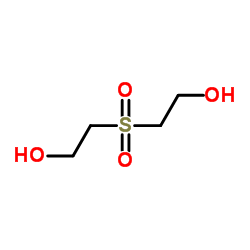Biological fate of sulphur mustard, 1,1'-thiobis(2-chloroethane): identification of beta-lyase metabolites and hydrolysis products in human urine.
R M Black, R W Read
文献索引:Xenobiotica 25(2) , 167-73, (1995)
全文:HTML全文
摘要
1. Samples of urine from two human subjects accidentally exposed to sulphur mustard were analysed for metabolites derived from hydrolysis (thiodiglycol, thiodiglycol sulphoxide), conjugation with glutathione (1,1'-sulphonylbis [2-S-(N-acetylcysteinyl)ethane]) and from further metabolism of glutathione conjugates by the beta-lyase pathway (1,1-sulphonylbis[2-(methylsulphinyl)ethane], 1-methylsulphinyl-2-[2-(methylthio)ethylsulphonyl]ethane). 2. Thiodiglycol sulphoxide was excreted in much higher concentrations than thiodiglycol, as was observed previously in rat exposed to sulphur mustard. However, the use of thiodiglycol sulphoxide as a biological marker for sulphur mustard poisoning is limited by its presence at low concentrations in normal human urine. 3. beta-lyase metabolites were detected at concentrations comparable with those of thiodiglycol sulphoxide. No background levels of beta-lyase metabolites have been detected in normal human urine, and they are proposed as unequivocal diagnostic and forensic indicators of sulphur mustard poisoning in man.
相关化合物
| 结构式 | 名称/CAS号 | 分子式 | 全部文献 |
|---|---|---|---|
 |
2,2'-磺酰基双乙醇
CAS:2580-77-0 |
C4H10O4S |
|
Analysis of the sulphur mustard metabolites thiodiglycol and...
2007-01-01 [J. Chromatogr. B. Analyt. Technol. Biomed. Life Sci. 845(1) , 114-20, (2007)] |
|
Analysis of urinary metabolites of sulfur mustard in two ind...
2008-01-01 [J. Anal. Toxicol. 32(1) , 10-6, (2008)] |
|
Linker phosphoramidite reagents for the attachment of the fi...
2004-01-01 [Nucleic Acids Res. 32(2) , 623-631, (2004)] |
|
Methods for the analysis of thiodiglycol sulphoxide, a metab...
[J. Chromatogr. A. 558(2) , 393-404, (1991)] |
|
Improved methodology for the detection and quantitation of u...
1995-03-10 [J. Chromatogr. B, Biomed. Appl. 665(1) , 97-105, (1995)] |